Dating to around 2000 BCE, the Lurgan Canoe is Ireland’s oldest known boat and one of Europe’s longest dugout canoes, measuring an impressive 15 meters (50 feet). Unearthed in 1901 from a bog near Lurgan, County Galway, this Bronze Age relic offers a remarkable glimpse into Ireland’s prehistoric past, revealing both the craftsmanship of its makers and significant environmental changes over millennia. Now displayed at the National Museum of Ireland – Archaeology in Dublin, it stands as a testament to ancient ingenuity and maritime culture.
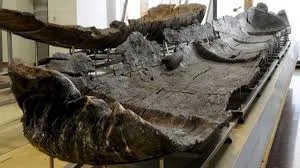
A Bog’s Perfect Preservation
Discovered during peat cutting in Lurgan Bog, the canoe was found in near-pristine condition, its oak wood bleached an eerie white by the bog’s acidic, low-oxygen environment. This remarkable preservation protected the canoe for over 4,000 years, though it darkened to a deep brown shortly after exposure to air. Carved from a single, massive oak trunk—larger than any oak found in modern Ireland—the canoe’s size and craftsmanship suggest a society with advanced woodworking skills and access to substantial trees, hinting at a landscape far different from today’s.
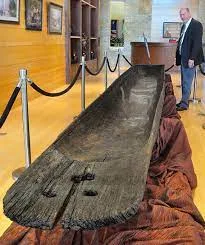
The canoe’s location, far from any navigable water body, is equally intriguing. Bogs often form over former lakes or wetlands, and the Lurgan Bog likely covered a lake that existed during the Bronze Age. This, combined with the use of a giant oak, points to a wetter, more forested Ireland 4,000 years ago, before deforestation and climate shifts altered the ecosystem.
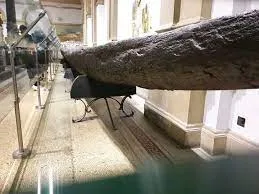
A Feat of Bronze Age Craftsmanship
Crafting the Lurgan Canoe was a monumental task. Bronze Age artisans felled a colossal oak, likely using stone or early metal tools, and hollowed it out with fire, adzes, and chisels to create a sleek, functional vessel. At 15 meters long and about 1 meter wide, it could have carried multiple people or heavy cargo, possibly for fishing, trade, or ceremonial purposes along ancient waterways. Its design, simple yet robust, reflects a deep understanding of wood and water, tailored to navigate Ireland’s rivers or lakes.
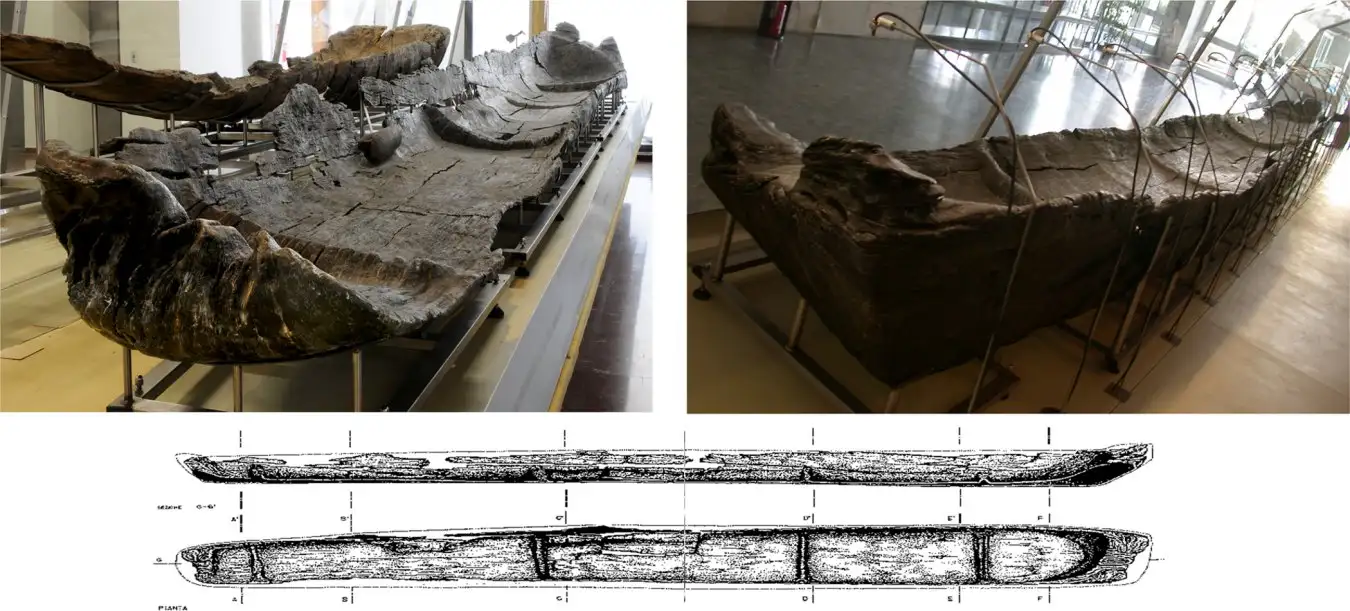
The canoe’s size places it among Europe’s largest dugouts, rivaling finds like the 10-meter Hanson Log Boat from England (c. 1500 BCE). Its construction around 2000 BCE aligns with the early Bronze Age in Ireland, a time of growing cultural complexity, marked by megalithic tombs and early metalwork.
A Window into a Lost World
The Lurgan Canoe’s discovery challenges assumptions about prehistoric Ireland. Its remote bog site suggests that lakes or rivers once existed nearby, now vanished due to ecological changes. The absence of such large oaks today further indicates deforestation and climatic shifts, likely driven by human activity and natural drying trends. The canoe’s purpose—whether for practical transport or ritual use—remains speculative, but its scale suggests a community with the resources and organization to undertake such a project.
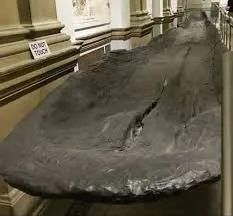
A Treasure on Display
Since its discovery, the Lurgan Canoe has been a centerpiece at the National Museum of Ireland – Archaeology in Dublin, where it captivates visitors with its size and story. Preserved through careful conservation, it remains a tangible link to Ireland’s Bronze Age, when waterways were lifelines and giant trees towered over the land. The canoe’s ghostly white origins and its darkened, weathered form today mirror the passage of time, inviting reflection on how Ireland’s landscape and people have transformed over 4,000 years.
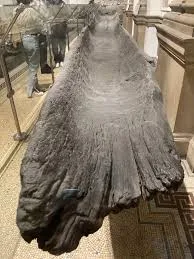
The Lurgan Canoe is more than an artifact—it’s a voyage into a lost world, where ancient mariners carved their legacy into oak, leaving a timeless mark for us to marvel at today.





